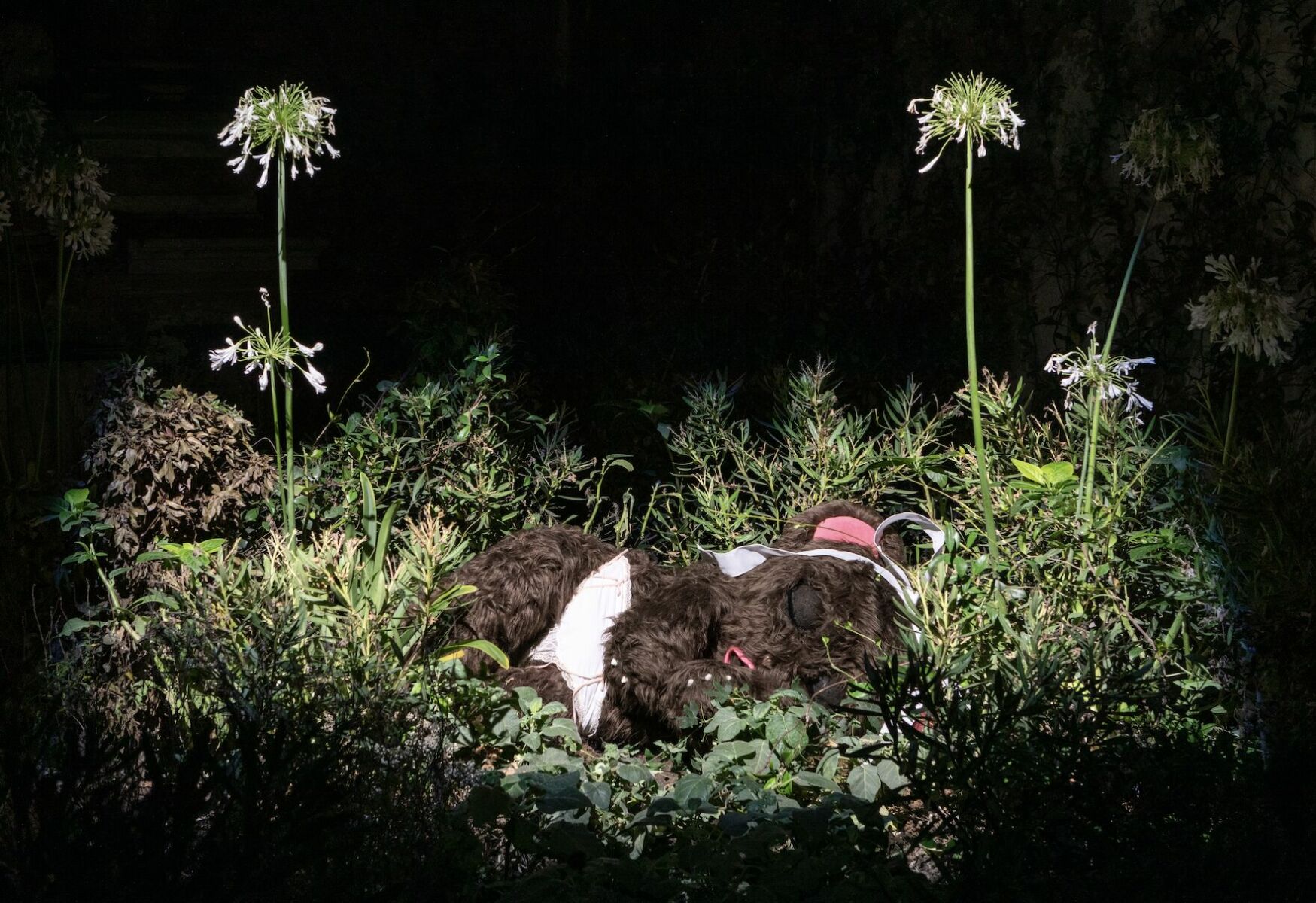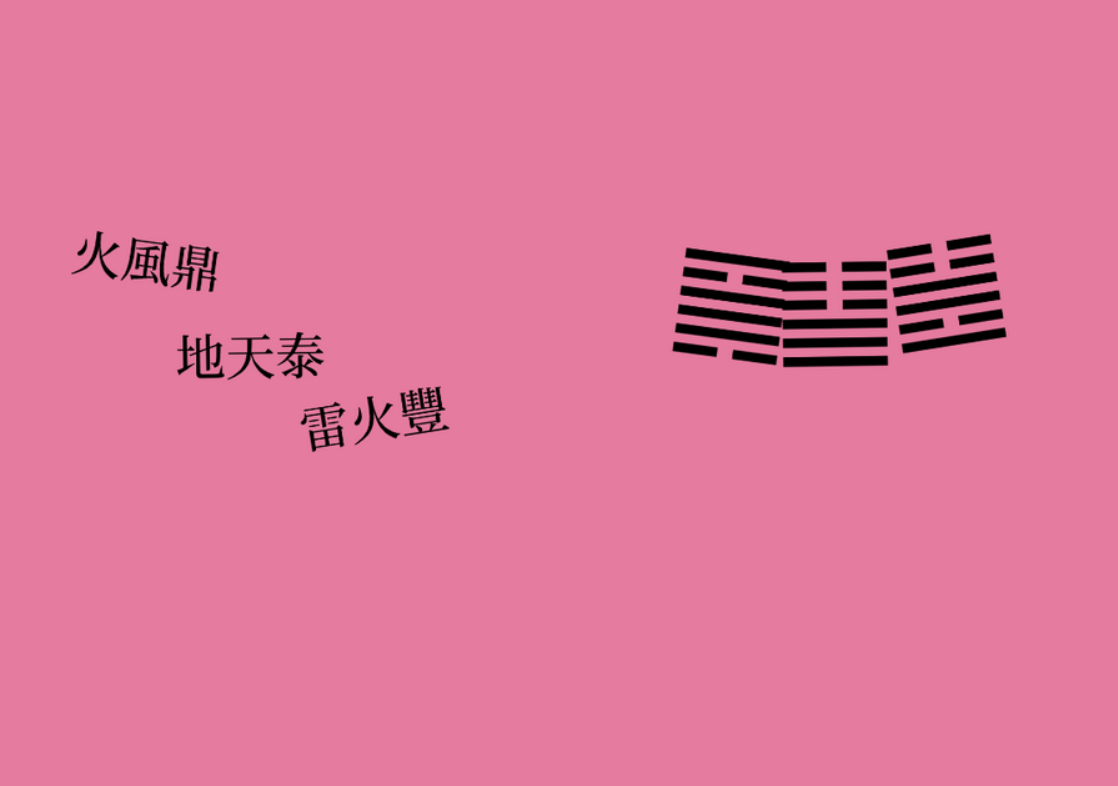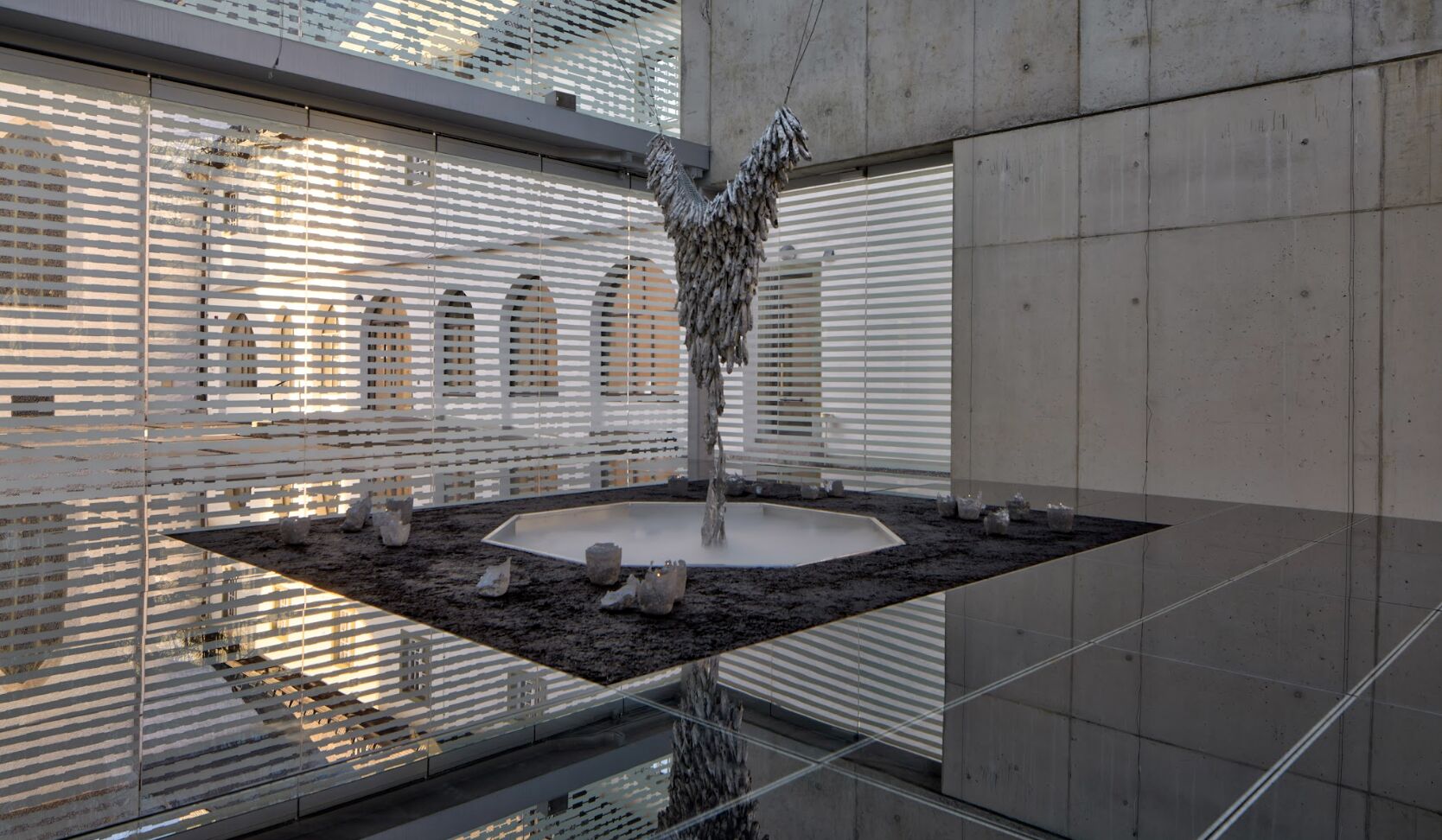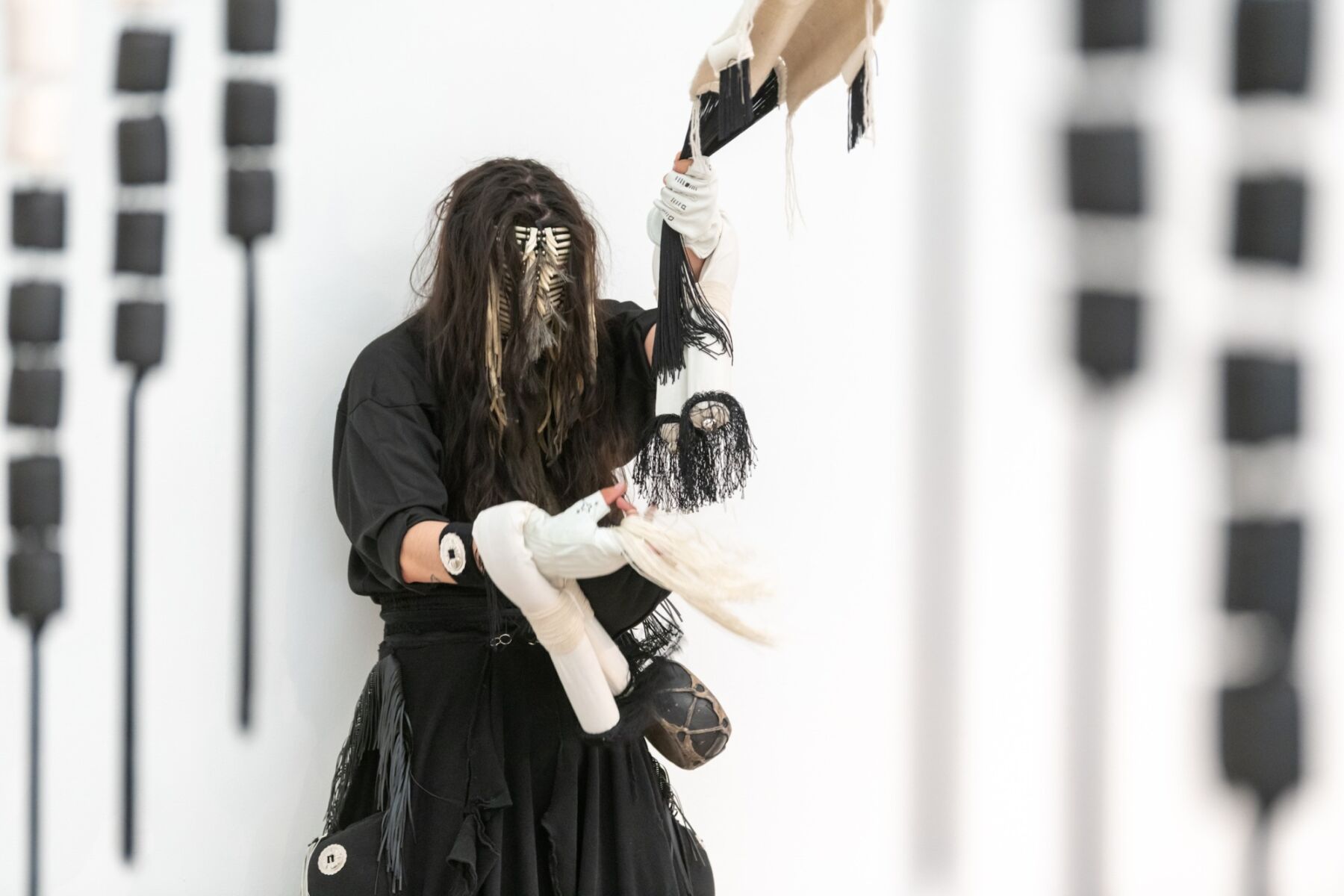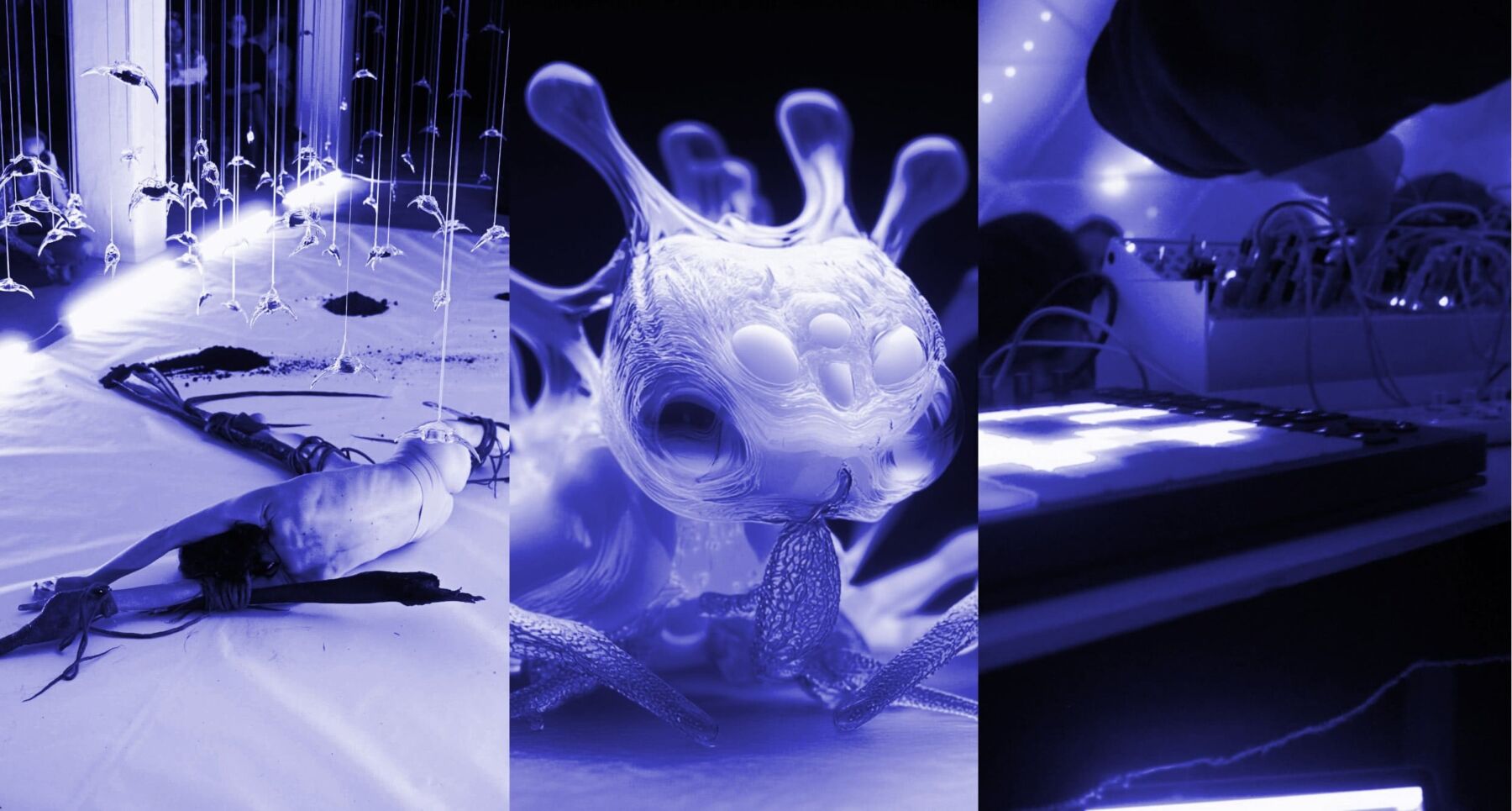Text by Elspeth Walker
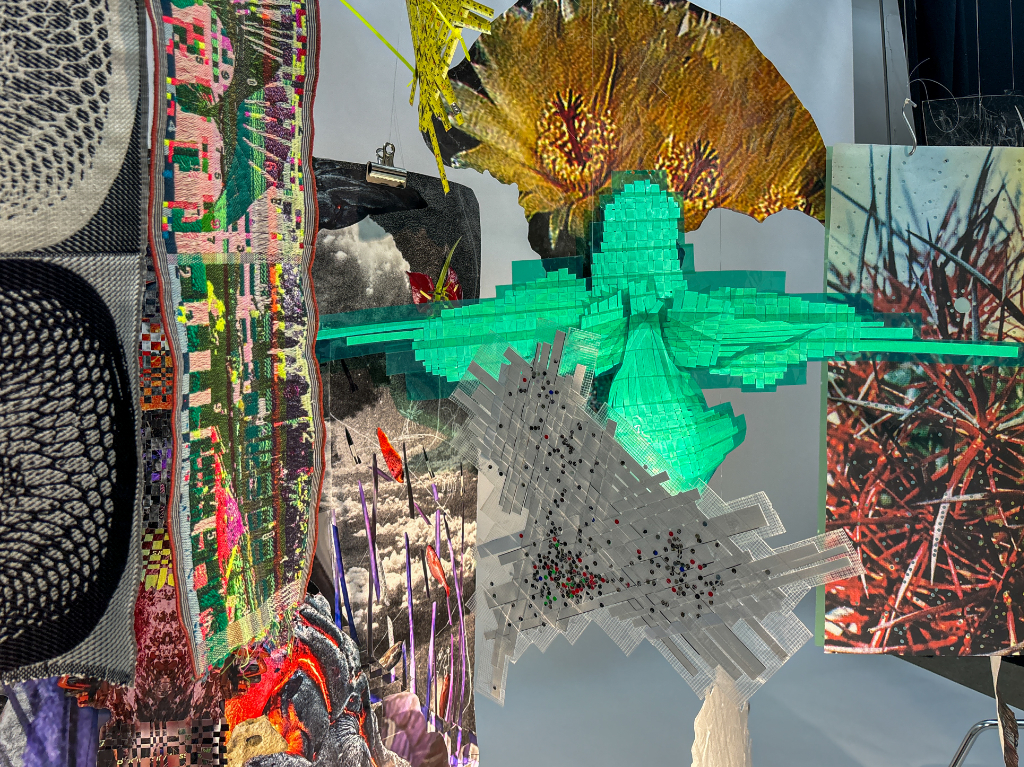
Our realities are often split between the physical and digital worlds, with the surfaces of both determining how we encounter life. From slick and shining digital platforms to the textured reality of the natural world, we often swing between varying states. However, artists such as Athena Mothership are challenging the need to divide between the two, creating a new hybrid space through modern weaving practices.
Athena Mothership, self-described as a humanoid spaceship that travels through time and space and ages in between, is an artist based in London. They hold an MA in Contemporary Art Practice from the Royal College of Art and a BA in Art History from Peking University. They spend their time between London and New York, working on their practice. Combining traditional methods with technology, their work is the beginning of an exciting space where our main realities can merge.
Athena states that the Mothership – both themselves and their artistic ethos – is: on a visual odyssey … mapped by the theme the Topology and Stack-Ups of the Surface of an Image.
From their study of Art History during their BA, they became interested in iconography and how surfaces held meaning within different forms. Iconography is associated with the study of symbols and images used to represent complex forms, ideas and themes within a culture. Their examination of iconographic practices has led to a wider exploration of how surfaces can be manipulated to create new conversations. It has begun a new search for ‘iconography of contemporary life and death’.
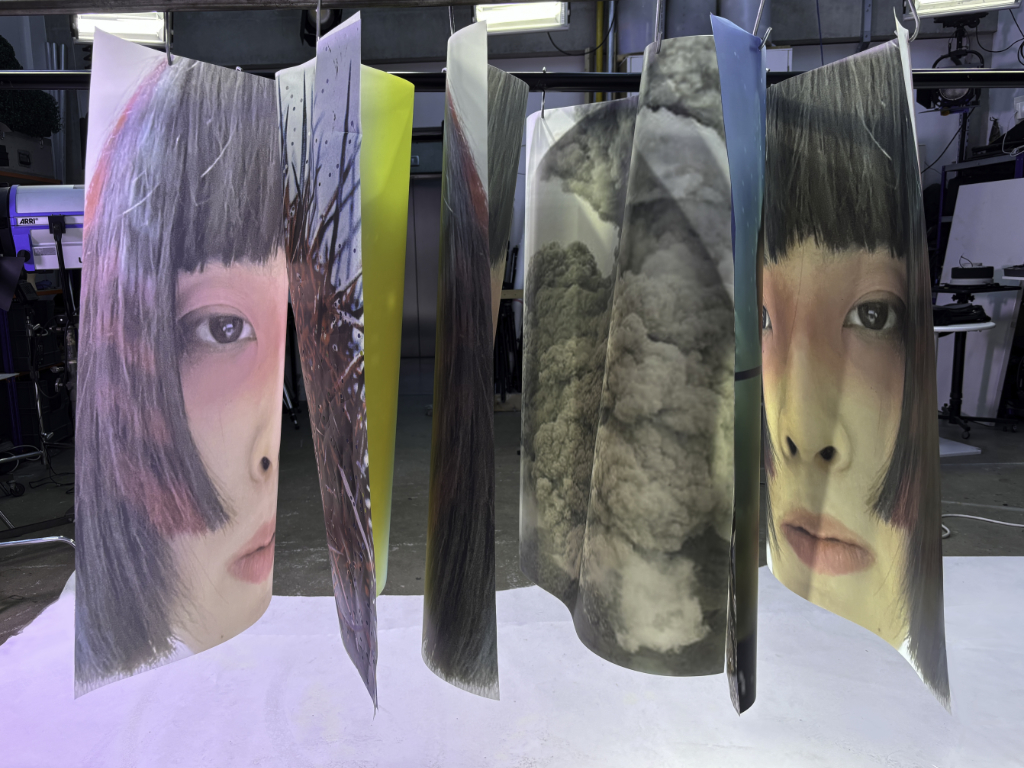
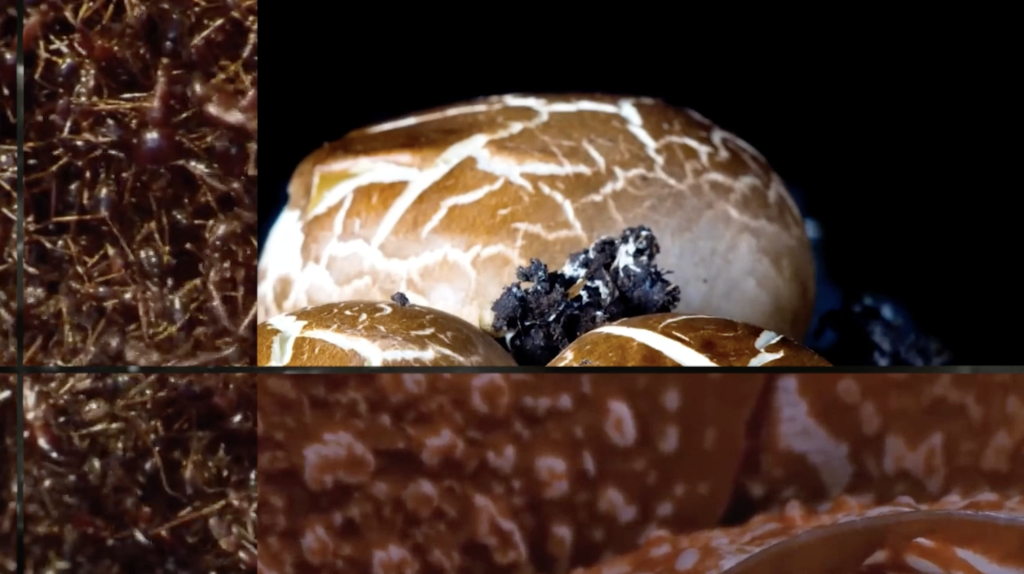
For a long time, their practice has focused on creating using digital techniques. Whether this is in the form of photography, prints, or performance, digital programs have enhanced their explorations. However, through experimentation, weaving has become a recent part of their practice. They look at baskets, tapestries, and paper weaving, exploring how it opens up a surface.
Weaving has long been a form of recording history, and also a craft and art that has developed a lot of daily objects in our material worlds. Bringing old technology together with new, Athena’s work approaches weaving in unique ways. The most striking is the material used to weave. They take the practice of weaving, but as their medium, they use digital images and prints, combined with waste or discarded thread. Often crossing over, and weaving two images at once, weaving allows a new object to form. This new piece of work is both a combination of two things and a new thing on its own. This is reflected in Athena’s textural studies, exploring how natural elements will affect a piece of work, especially photographic prints, and alter it into a new form. Building on this, weaving allows a new surface to appear physically and optically. The pixels that made up the original works are now going along new pathways, creating new conversations.
“I look at how to bring cyber interfaces to an analogue surface”
When speaking with the artist, it is very apparent that the practice of weaving is as much about world-building as it is about the method of creating. Through the intersecting images and the ripples across the works, Athena unlocks a hybrid space and a new world where digital and physical become one. They describe their practice as: ‘I look at how to bring cyber interfaces to an analogue surface’. By doing this, creating these layers and new surfaces, it is as if Athena can create new pathways to multiple worlds.
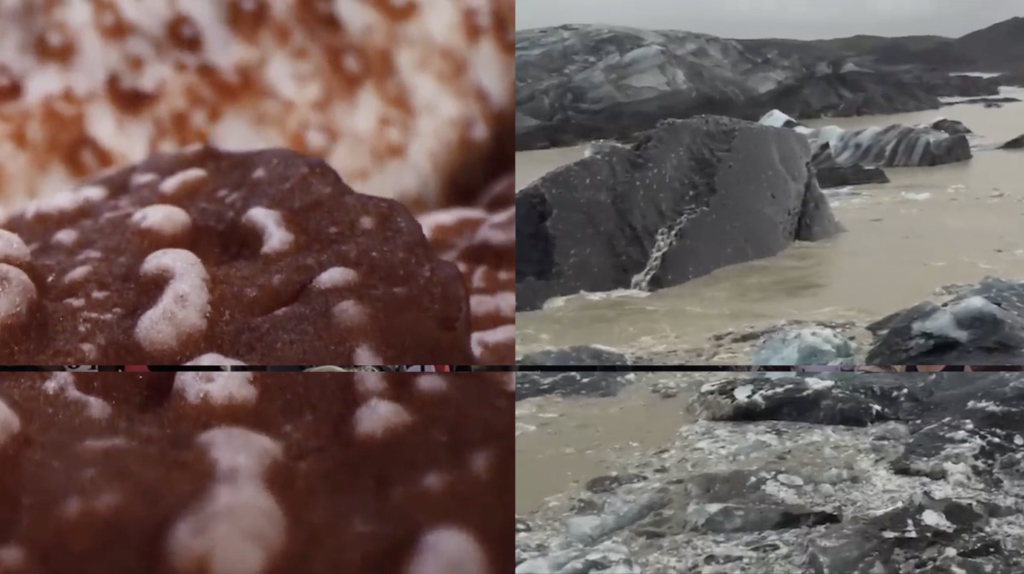
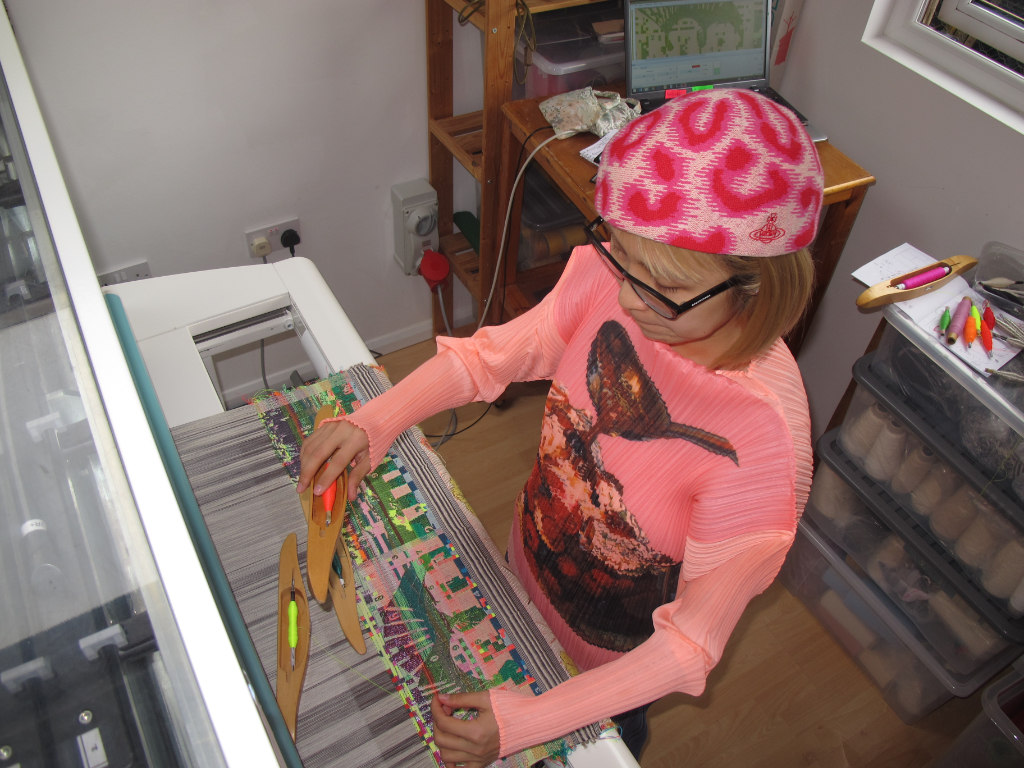
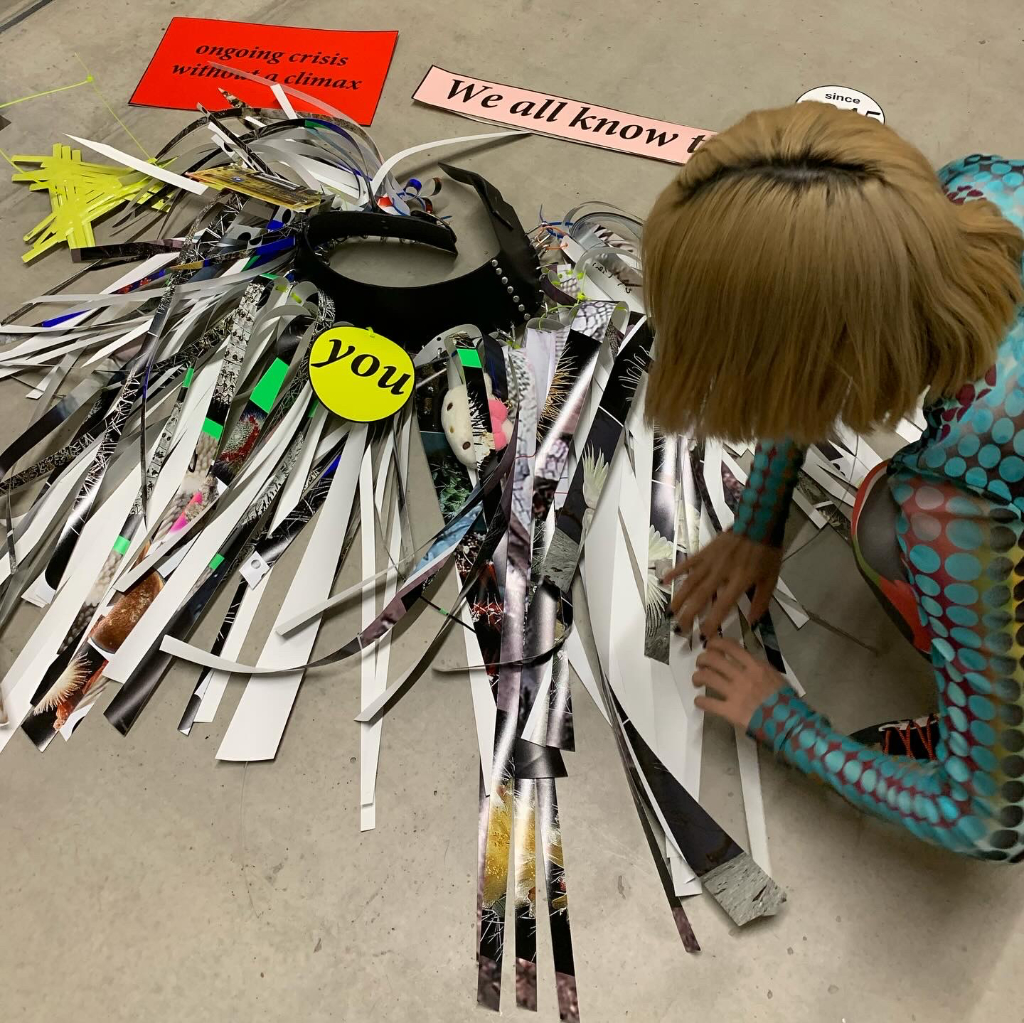
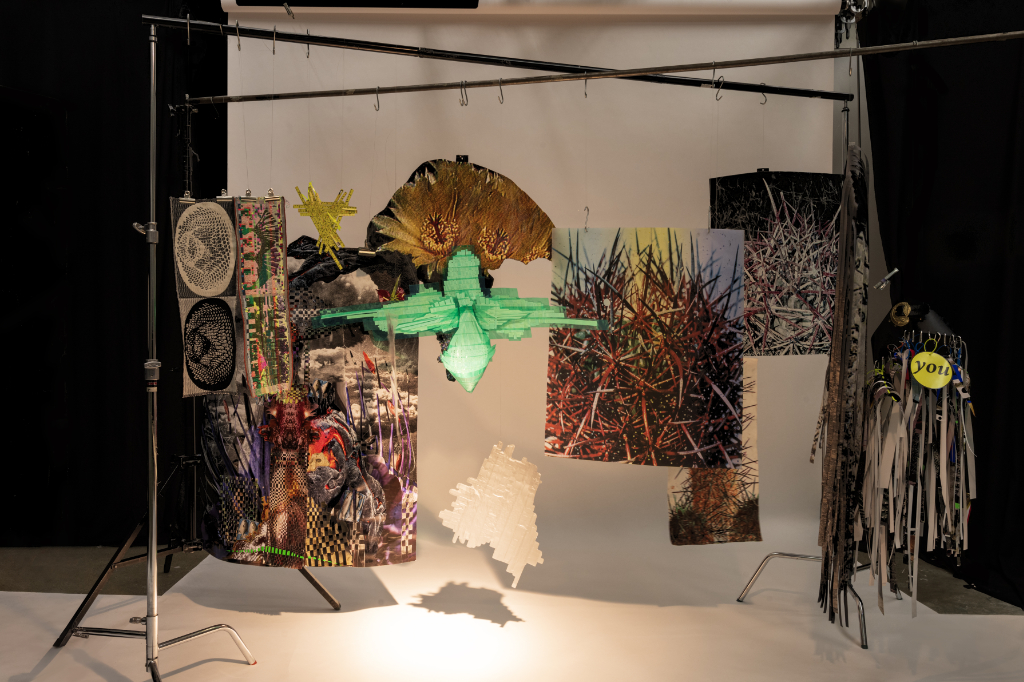
Many of the woven pieces by Athena come from their performance work. Using stills from recordings and cutting them up or splicing them together, visual information becomes intertwined, playing with how both woven thread and digital threads can hold and translate information. Part of the process of weaving is to defy complex systems. Through peeling back layers, restoring visual information back into simple strands, and then exploring their hidden meanings by reconnecting each piece through weaving. Athena’s weaving has two stages—digital and physical. Using complex computer programmes, they generate pixels and patterns to form computational weaving, with each pixel a thread. Here, the screen becomes the loom, and the overlapping and planning are key to the visual narrative of their work.
After this, they either move to a TC loom when creating with scrap thrcoead and paper, or a free loom for experimental materials such as measuring tapes, or take strips of their digital creation and build them back together. For this element, Athena free weaves. This process is about instinct and reactionary choices. Just like their performance pieces, the body and its choices feature in the work; the reaction of hands and touch are key elements. Weaving develops a practice both with and without order.
Here, the tension between materials is felt both through visual combinations and through the pieces interacting, rejecting or adhering to the pattern being created. Just like any odyssey, it is the journey that makes the piece, not just arriving at the outcome. Here, the surfaces finally made are valuable, but also a testament to a process of forming interplanetary systems and networks, adhering to Athena’s mission.
As Athena Mothership states, ‘all stories are interconnected’. In these wonderful works, which are visually bold, swinging between being both daunting and peaceful to view, creating patterns that make you question what message is being relayed to me, a capturing of contemporary thought and exchange can be found. The mingling of old forms of communication via the loom, and the interlocking fragments of the modern digital images that surround us daily, represents the human position now: both living as a creature in tangible and intangible worlds at once. If anything, Athena’s work is creating a reflection of the self, an icon of what contemporary human actions manifest to, whilst pursuing the mission of what might come next, or still be out there to find.

